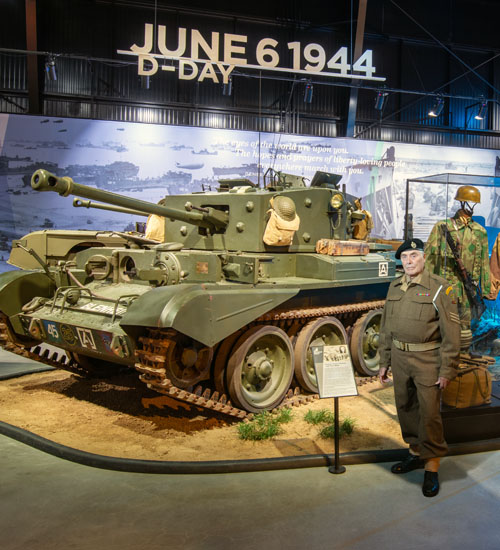2025 American Heritage Museum / Collings Foundation Annual Magazine
issuu.com
Welcome to Issuu’s blog: home to product news, tips, resources, interviews (and more) related to content marketing and publishing.D-Day
LCVP “Higgins Boat” – USA | LANDING CRAFT
Churchill Crocodile – UK | FLAME THROWER TANK
QF 6-pounder – UK | ANTI-TANK GUN
Bren Gun Carrier (Universal Carrier) – UK | LIGHT PERSONNEL CARRIER
Allied plans for a cross-Channel invasion of what Hitler called his “Fortress Europe” began to ramp up in 1943. Erwin Rommel took charge of defense operations along the Atlantic coast of occupied Europe. Hitler charged Rommel with completing the so-called Atlantic Wall, a 2,400-mile fortification of bunkers, landmines, beach and water obstacles.
Code-named Operation Overlord, the Battle for Western Europe began on D-Day (June 6th, 1944). Nearly 156,000 American, British, Canadian, Polish and Free French forces landed on five beaches (two American, two British, one Canadian) along a 50-mile stretch of the heavily fortified coast of France’s Normandy region.
The invasion was one of the largest amphibious military assaults in history and required extensive planning, a huge logistical effort, special feats of engineering, and probably most important, close cooperation among the armies, navies and air forces of all the participating Allied nations. The Normandy landings have been called the beginning of the end of the war in Europe. In fact, they marked the beginning of a new and far more deadly phase, lasting over 11 months.
Operation Neptune – the naval component of Operation Overlord – was organized and commanded by British Admiral Sir Bertram Ramsay, the same man who oversaw the 1940 evacuation of the British Expeditionary Forces from the Dunkirk beaches. Neptune would be the largest seaborne invasion in history, only exceeded by the invasion of Okinawa the following year. The invasion fleet was drawn from eight different navies and involved 196,000 naval personnel and 6,939 vessels ranging in size from Higgins boats to battleships.
By dawn on June 6, thousands of paratroopers and glider troops were already on the ground behind enemy lines, securing bridges and exit roads. The amphibious invasions began at 6:30 a.m. The British and Canadians overcame opposition to capture beaches code-named Gold, Sword, and Juno, as did the Americans at Utah Beach. U.S. forces faced the heaviest resistance and most difficult terrain under the cliffs of Omaha Beach, where there were over 2,000 American casualties. However, by day’s end, approximately 156,000 Allied troops had successfully stormed Normandy’s beaches. According to some estimates, more than 4,000 Allied troops lost their lives in the D-Day invasion, with thousands more wounded or missing. Perhaps 6,000 Germans were killed, with many more wounded or surrendering to advancing Allied forces. It took even heavier fighting, against German reinforcements and several Panzer divisions, to secure the Normandy landing sites by June 11. By the end of August 1944, the Allies had reached the Seine River, Paris was liberated, and the German army was running for the Rhine, abandoning tanks and trucks and other equipment after its bloody defeat at Falaise. But then the Allies went ‘a bridge too far’ in the Netherlands and suffered a hard defeat, and more slogging around Metz. The armies settled into the forests and hills that straddled the Rhine, fighting a slower, more grinding kind of war into the last months of 1944. The war would not be ‘over by Christmas.’ It would continue all winter and into the late spring of 1945.




